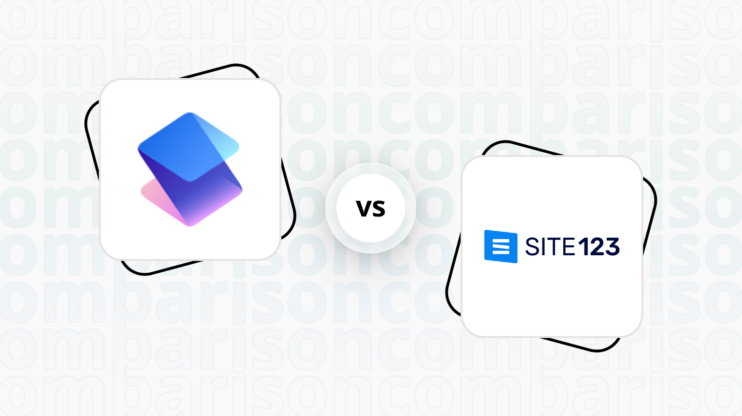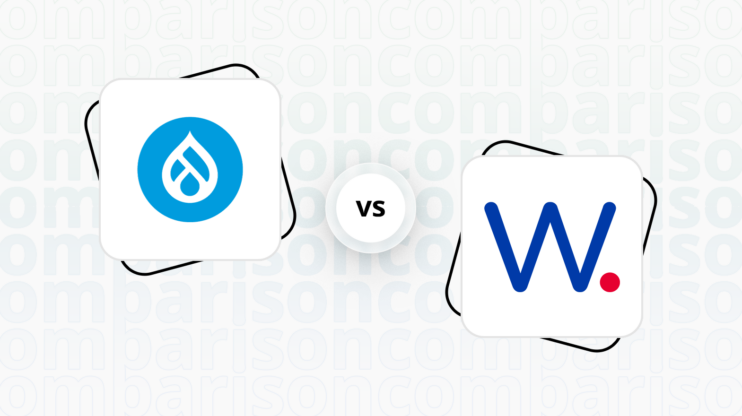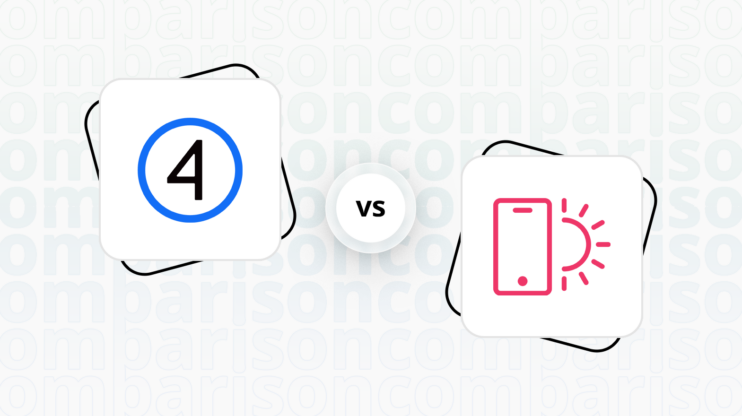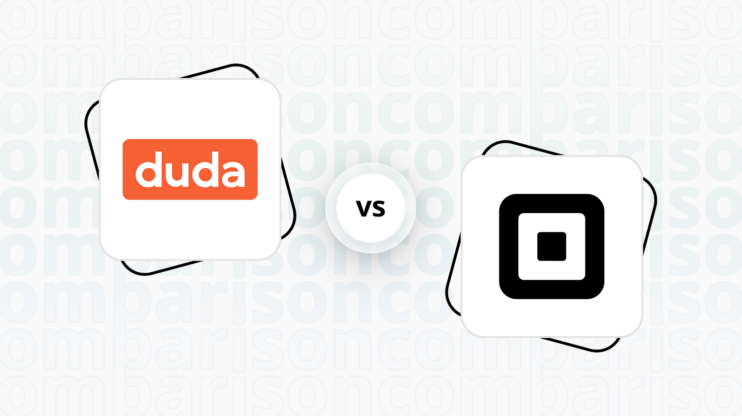Final verdict
Showit and Tilda both offer unique strengths, catering to different user needs and preferences.
-
Showit (Overall Grade: 6.4/10)
is tailored for creative professionals like photographers and designers who need a high degree of customization and control over their website’s appearance. Its dual canvas interface and seamless integration with WordPress make it a powerful tool for those who prioritize design flexibility and blogging capabilities. However, its ecommerce features are limited, making it less suitable for extensive online stores. -
Tilda (Overall Grade: 6.7/10)
excels in providing a user-friendly platform with a wide range of pre-designed blocks and templates, making it ideal for bloggers, small businesses, and digital marketers. Its focus on typography and visual content allows users to create visually appealing websites without coding skills. Tilda also offers better ecommerce capabilities compared to Showit, making it a more versatile option for users who need both design flexibility and ecommerce functionality.

|

|
|
|---|---|---|
|
Design functionalities & templates |
8.5 |
8.6 |
|
Ease of use |
8.6 |
8.0 |
|
Ecommerce |
4.8 |
7.2 |
|
Website Editors |
8.0 |
8.0 |
|
Product testing options |
8.3 |
5.9 |
|
Price |
7.9 |
8.0 |
|
Hosting quality |
7.3 |
6.2 |
|
Website speed optimization |
5.4 |
4.9 |
|
Plugins and integrations |
5.8 |
7.6 |
|
Marketing features |
7.2 |
6.9 |
|
Customer support |
6.4 |
5.5 |
|
Security |
8.3 |
7.6 |
|
AI capabilities |
0 |
2.1 |
|
User Management |
6.7 |
7.3 |
Best for ecommerce
 4.8
4.8
 7.2
7.2
Verdict
: Tilda is the better choice for ecommerce, offering more comprehensive features and higher scores in key areas compared to Showit.
-
Showit
: Showit is primarily a design-focused website builder, making it ideal for creative professionals. While it integrates with platforms like Shopify and WooCommerce for ecommerce, it lacks built-in ecommerce functionalities. This makes it less suitable for extensive ecommerce needs. In the Showit vs Tilda comparison, Showit scores 4.8 for ecommerce. -
Tilda
: Tilda excels in ecommerce with built-in features like product catalogs, payment gateways, and order management. It offers around 20 ready-made online store templates, making it easier to set up an online store without coding. Tilda scores 7.2 for ecommerce, making it a more robust option for online businesses.
Best for informational & business websites
 8.7
8.7
 8.4
8.4
Verdict
: Showit and Tilda are both excellent choices for informational business websites, but Showit slightly edges out Tilda due to its higher customization capabilities and ease of use.
-
Showit
: Showit is a top choice for creative professionals looking to build highly customized, mobile-responsive websites. Its dual canvas interface allows for independent design of mobile and desktop views, providing a high degree of control over the website’s appearance. Showit’s seamless integration with WordPress for blogging makes it a versatile option for those who want both design flexibility and powerful blogging capabilities. With a score of 8.7, Showit excels in providing a user-friendly experience and comprehensive customer support, making it ideal for informational business websites. -
Tilda
: Tilda is a versatile platform designed for creating visually appealing websites, landing pages, and online stores without coding. It offers a wide range of pre-designed blocks and templates, focusing on typography and visual content. Tilda’s block-based design approach and advanced customization options through its Zero Block feature make it suitable for a wide spectrum of users, from small business owners to professional designers. With a score of 8.4, Tilda is a strong contender, especially for those who prioritize design and visual content. However, when comparing Showit vs Tilda, Showit’s higher ease of use and customization capabilities give it a slight edge.
Detailed comparison
Design functionalities & templates
Design FunctionalitiesRepresents how well each platform allows for creative design and customization of websites.Score Components:
- Template Variety (30%): Range and quality of design templates.
- Customization (30%): Flexibility and options for design alterations.
- User Interface (20%): Ease and intuitiveness of the design process.
- Responsiveness (10%): Adaptability to different devices and screen sizes.
- Innovation (10%): Unique design features and tools.
 8.5
8.5
 8.6
8.6
🏆
Winner: Tilda.
Tilda slightly edges out Showit in terms of design functionalities and templates, offering a diverse selection of design templates suitable for various types of content, all crafted by professional designers.
Showit offers a wide variety of templates and designs, catering to diverse aesthetic preferences and business needs. Users can choose from an extensive collection that ranges from minimalist and sleek to bold and artistic, ensuring there’s something for every brand identity.
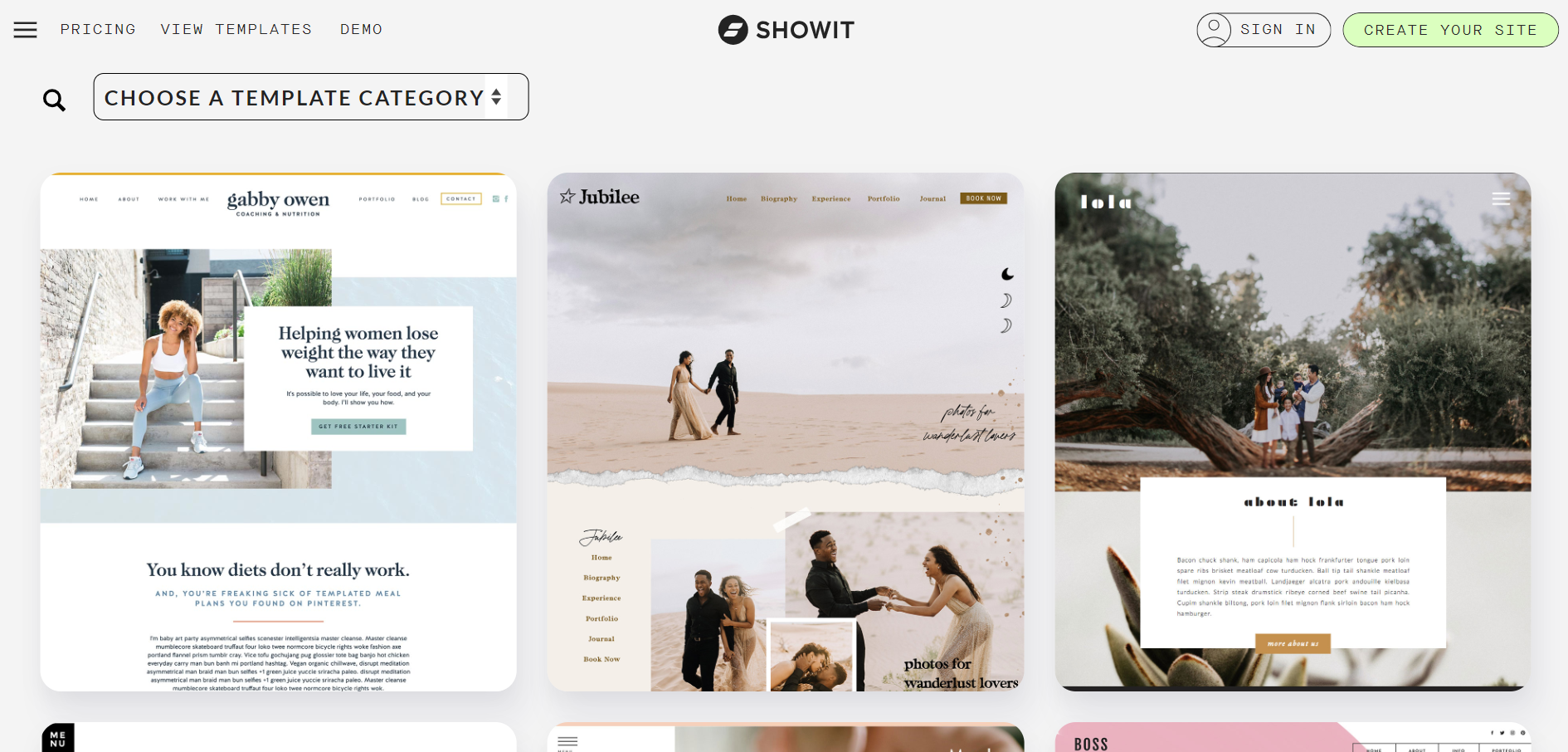
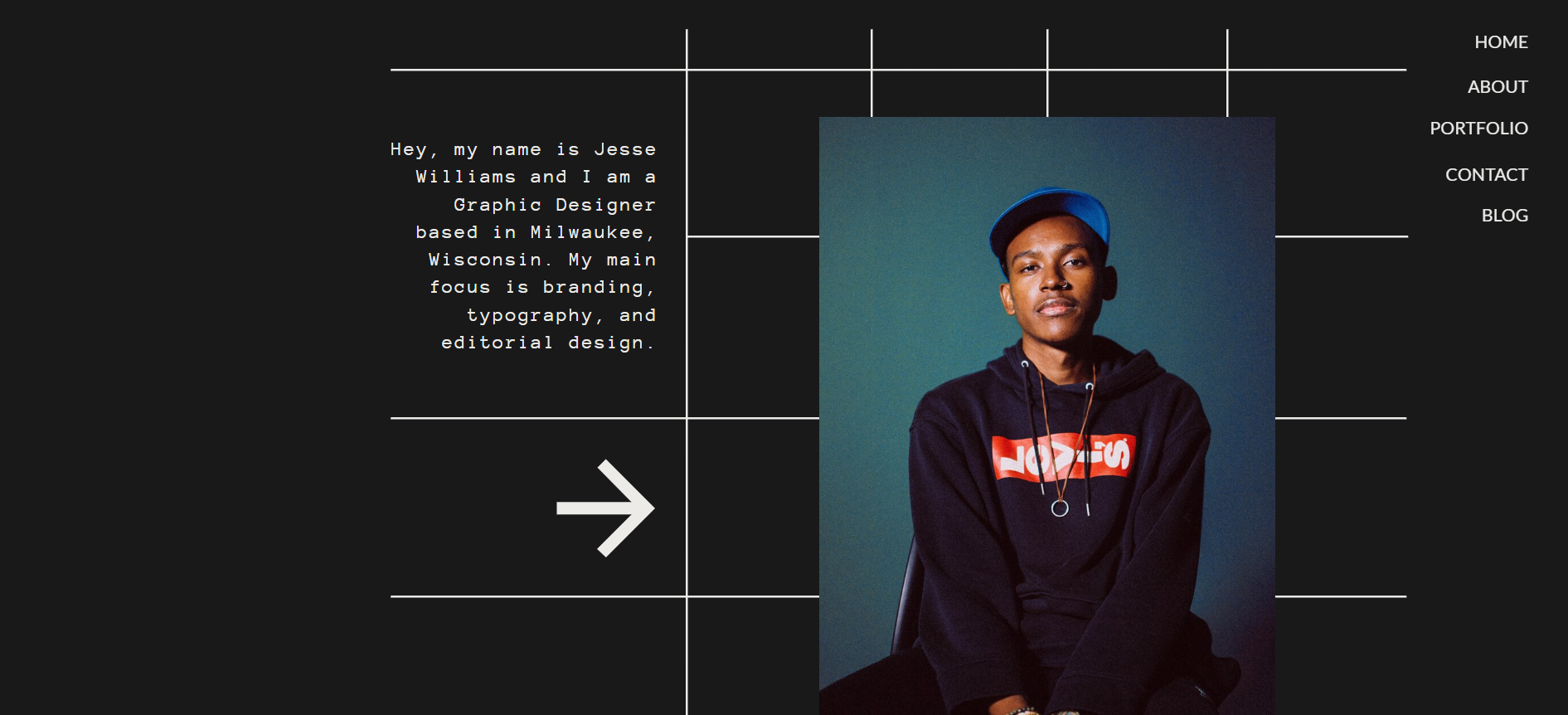
On the other hand, Tilda offers a diverse selection of design templates that are suitable for various types of content, all crafted by professional designers. These templates emphasize gorgeous typography, minimalist blocks, and striking images. Users have the flexibility to modify any template significantly or even start from scratch, ensuring the final website can meet a wide range of design preferences and requirements.
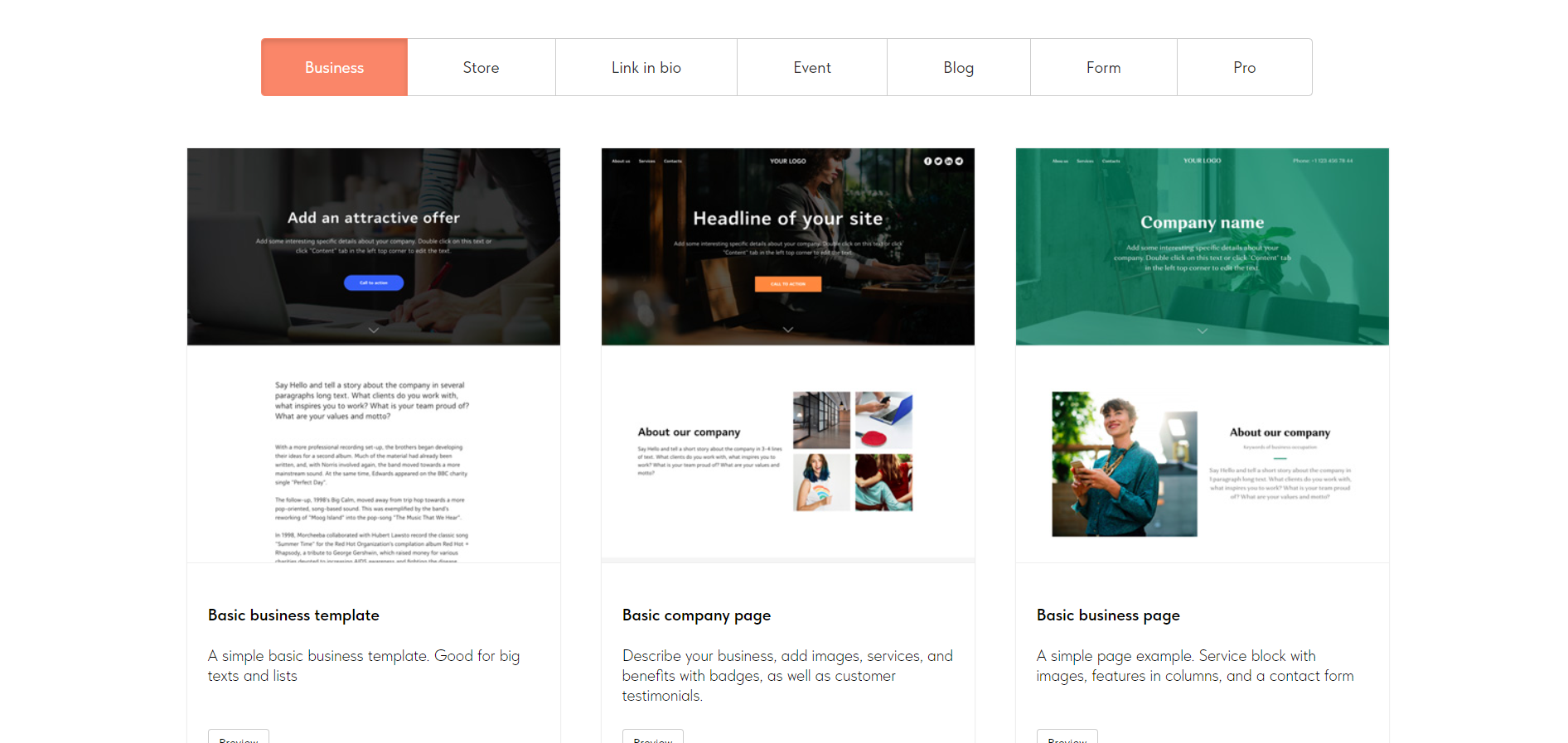
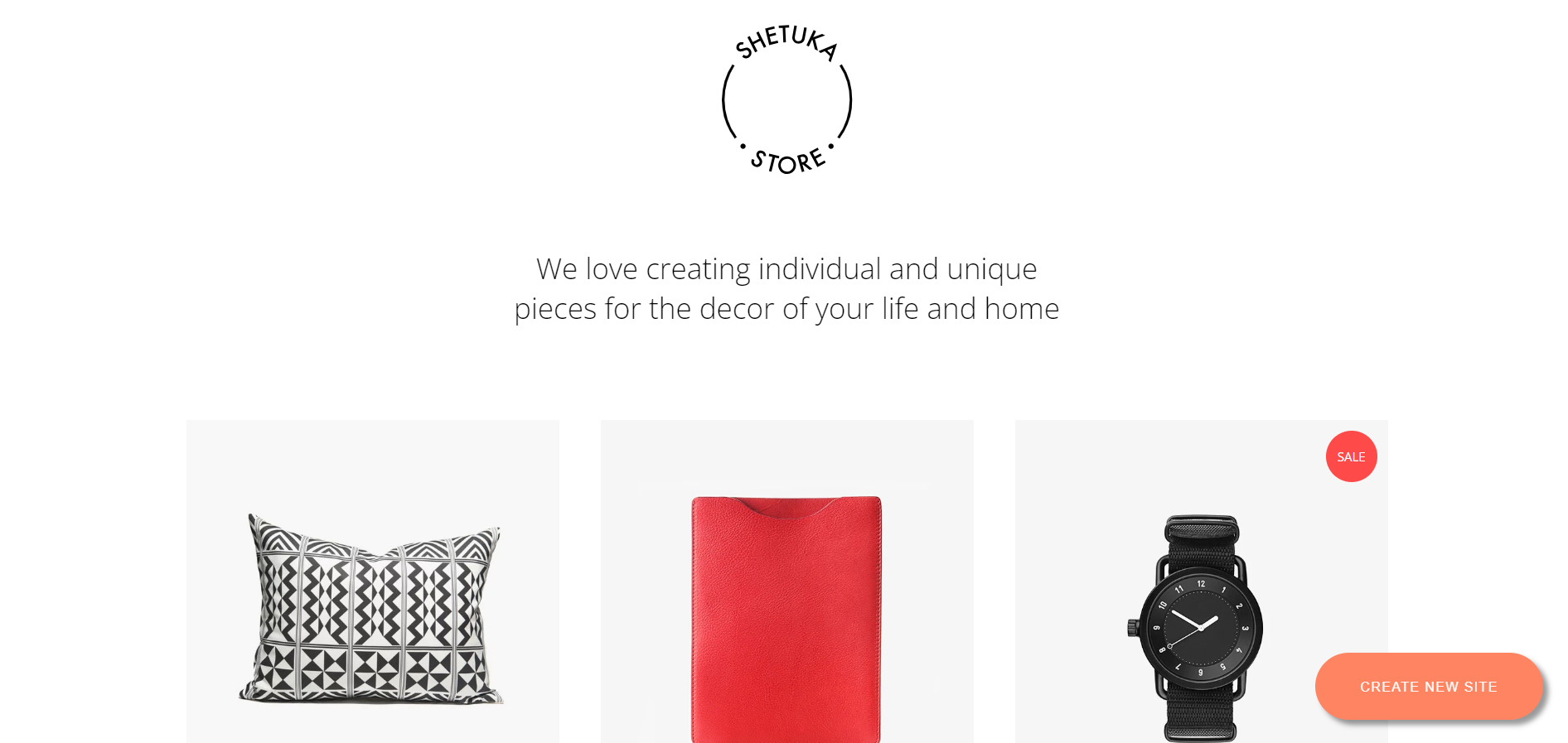
Get a head start on website creation with AI
Create a custom website tailored to your business needs 10X faster with 10Web AI Website Builder!
Ease of use
Ease of useReflects the platform’s overall user-friendliness.Score
Components:
- Learning curve (40%): Quickness and ease of getting started.
- Interface design (30%): Simplicity and intuitiveness of layout.
- User guidance (20%): Quality of tutorials and support.
- Flexibility (10%): Adaptability to various user skills.
 8.6
8.6
 8.0
8.0
🏆 Winner: Showit
. Scoring 8.6, Showit stands out for its user-friendly interface, making it exceptionally easy for creative professionals to create and manage their websites. Tilda, with a score of 8.0, offers a robust platform but with a steeper learning curve, especially for those new to website building. If ease of use is a priority, Showit is the clear winner in this category.
Learning Resources
🏆 Winner: Showit
. While both platforms offer solid learning resources, Showit goes a step further with its comprehensive training course and a more informal learning hub with videos, making it easier for users to learn and adapt.
For ecommerce
EcommerceMeasures the platform’s effectiveness in supporting online business activities.Score Components:
- Ecommerce themes and templates (20%): Variety and design of templates.
- Product management (25%): Ease of managing and organizing products.
- Payment options (25%): Variety and convenience of payment methods.
- Ecommerce features (20%): Features for managing an ecommerce store.
- Integration (10%): Compatibility with external e-commerce tools and services.
 4.8
4.8
 7.2
7.2
When it comes to ecommerce, Tilda outperforms Showit with a score of 7.2 against Showit’s 4.8. Showit is primarily a website builder focused on design, offering great flexibility and creative freedom, making it ideal for visually oriented websites rather than extensive e-commerce platforms. It includes basic ecommerce functions but lacks the comprehensive ecommerce features found in platforms like Shopify or WooCommerce. However, Showit allows integration of both the mentioned platforms for enhancing ecommerce capabilities.

|

|
|
|---|---|---|
|
Ecommerce themes and templates |
2.0 |
6.5 |
|
Product page customization |
2.5 |
7.0 |
|
Payment processing and commissions |
4.0 |
7.5 |
|
POS capabilities |
1.0 |
0.0 |
|
Payment gateways |
4.5 |
7.8 |
|
Product numbers |
3.0 |
6.0 |
|
Additional ecommerce features |
3.5 |
6.5 |
Showit ecommerce features:
- Shopify and WooCommerce integration
Tilda ecommerce features:
- Product Catalogs and Inventory management
- Payment Gateways integration
- Shipping options
- Order management
- Built-in CRM and marketing tools
Ecommerce themes & templates
Showit does not have any ecommerce specific templates. On the other hand, Tilda allows users to build their eCommerce sites using around 20 ready-made online store templates, emphasizing ease of use and the ability to create a store without needing coding or web design skills. The platform focuses on providing a seamless online shopping experience, enabling features such as adding items to the cart, viewing product specifications, customizing additional services like delivery, and choosing payment methods.
Product page customization
Showit has very basic ecommerce capabilities, primarily through its integration with WooCommerce and Shopify. In contrast, Tilda enables a wide range of customizations for product pages in online stores, including the design, e-commerce functionalities, and integration with external services. Features like product variants, delivery options, promotional codes, and diverse payment system integrations allow for a personalized shopping experience. Additionally, Tilda offers content personalization to cater to different customer preferences and backgrounds, enhancing the overall user experience.
Payment processing
Showit supports e-commerce by allowing integration with third-party platforms like Shopify Lite, ThriveCart, WooCommerce, and Podia, rather than offering direct payment processing or POS capabilities. Users can add e-commerce functionalities to their Showit sites using embed codes for “Buy Buttons” or similar features from these platforms. The choice of platform depends on the user’s specific needs, including product type, store size, and budget, as each platform has its own pricing and transaction fee structures. Additionally, the platform supports integration of PayPal pay button, allowing users to pay directly through their PayPal account.
On the other hand, the Tilda website builder supports a variety of popular payment systems such as Stripe, PayPal, and 2Checkout, allowing for easy integration to accept online payments. Tilda does not impose additional transaction fees beyond those of the payment gateways themselves. Tilda does not have POS capabilities, Tilda’s focus is on online transactions and e-commerce functionalities, with flexibility for “Cash on Delivery” options.
Website Editors
Website EditorsEvaluates the platforms’ website building and editing capabilities.Score Components:
- Customization tools (40%): Range and power of editing features.
- Editor usability (30%): User experience within the editor.
- Design flexibility (20%): Freedom in layout and design changes.
- Update and maintenance ease (10%): Simplicity of updating and maintaining the site.
 8.0
8.0
 8.0
8.0
🏆
Winner: Tie
. Both Showit and Tilda scored 8.0 for their website editors, indicating that they both offer excellent tools for building and customizing websites.
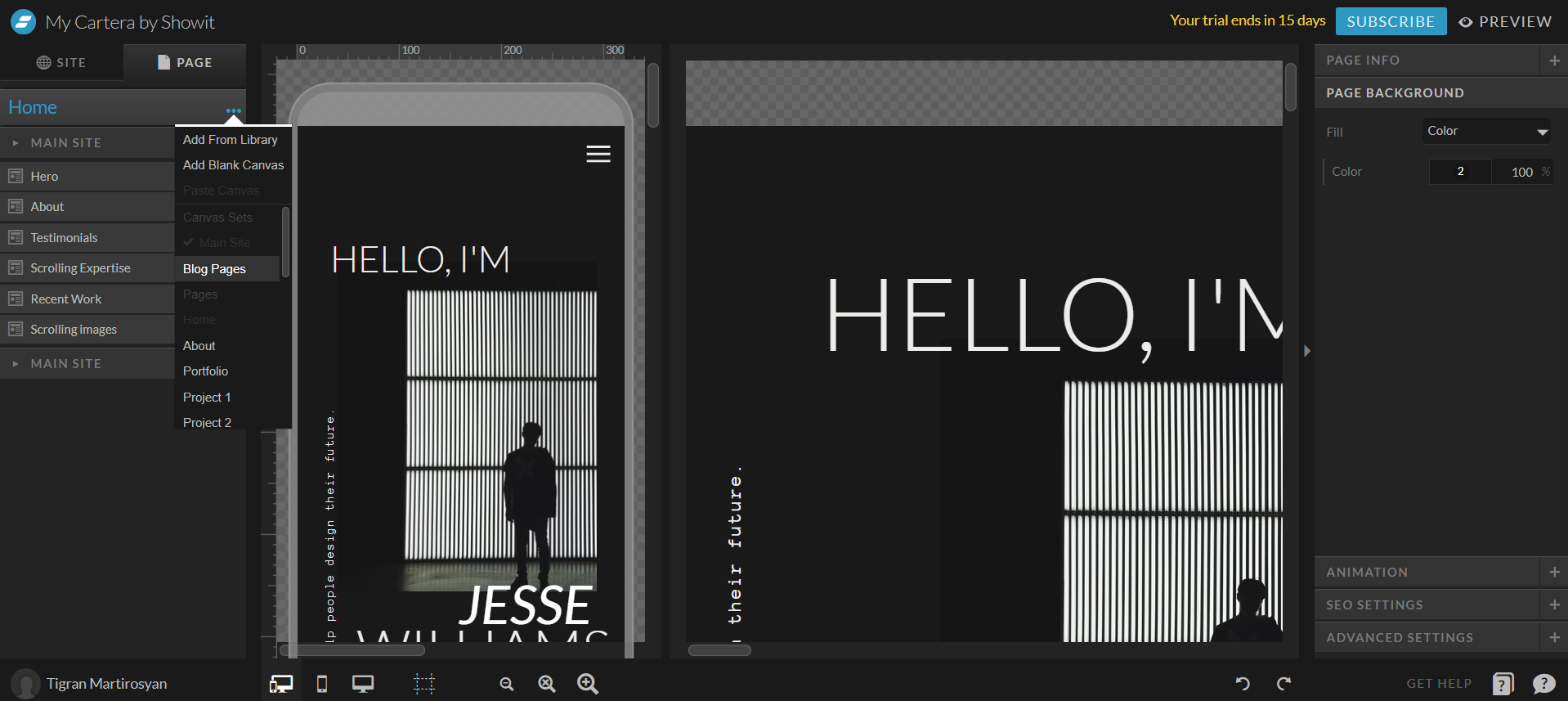
Showit’s editor is designed for creating custom, responsive websites with a focus on ease of use, especially for photographers and creative professionals. It allows users to design their website visually with a drag-and-drop interface, eliminating the need for coding knowledge. Users can create highly customized pages by adjusting layouts, fonts, and colors, and can also incorporate multimedia elements like videos and images directly into their designs. Additionally, Showit offers deep integration with WordPress for blogging, enabling users to manage and publish blog posts within the same platform, providing a seamless experience from website design to content management.
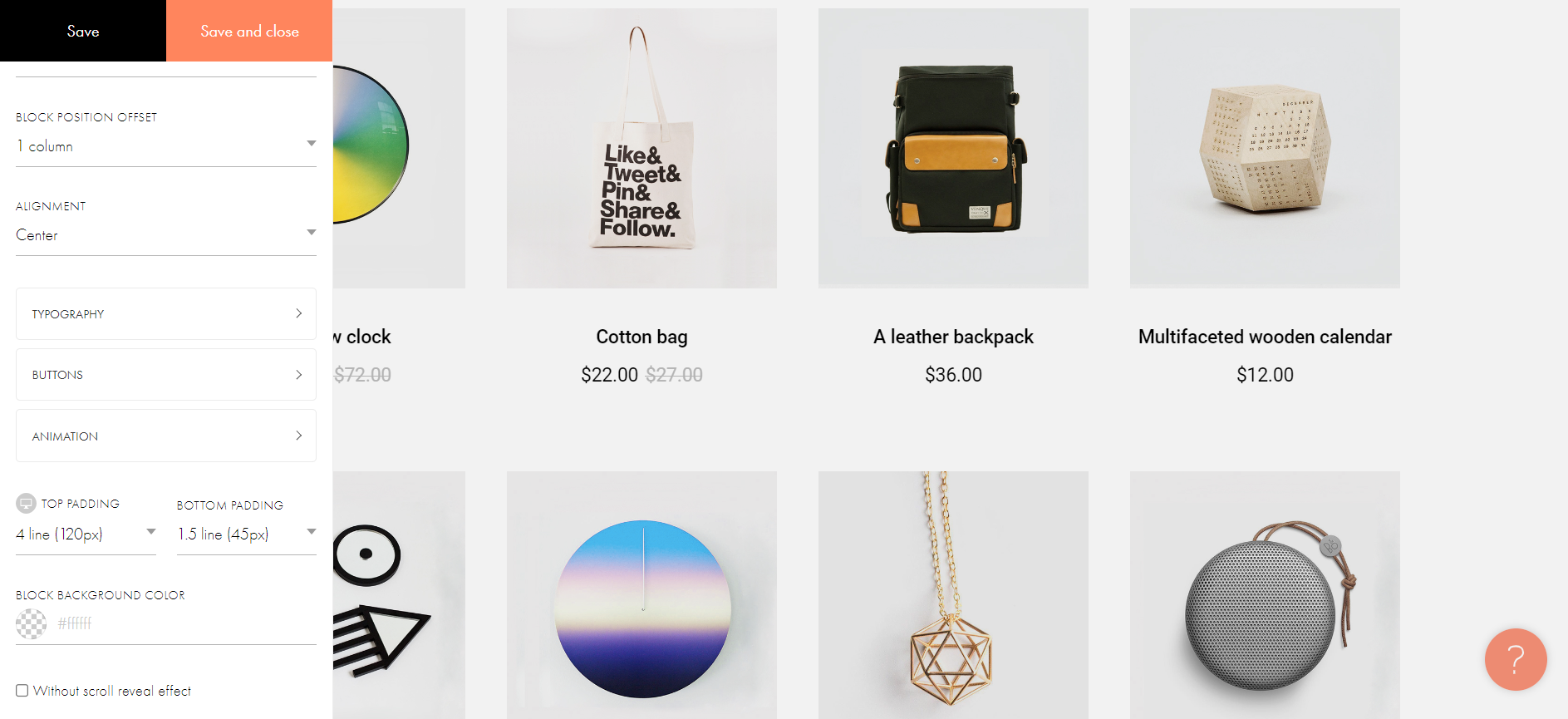
Tilda’s website builder editor offers a user-friendly, block-based design approach that simplifies the process of creating websites without requiring in-depth coding knowledge. It features advanced customization options through its Zero Block feature, allowing for detailed control over design elements for those needing more specific layouts. The platform supports responsive design, ensuring websites are optimized for all devices, and includes built-in SEO tools, analytics, and a range of integrations with third-party services for extended functionality. Tilda caters to a wide spectrum of users, from small business owners to professional designers, making it a versatile tool for web development.
Mobile editor/app
 0
0
 5.5
5.5
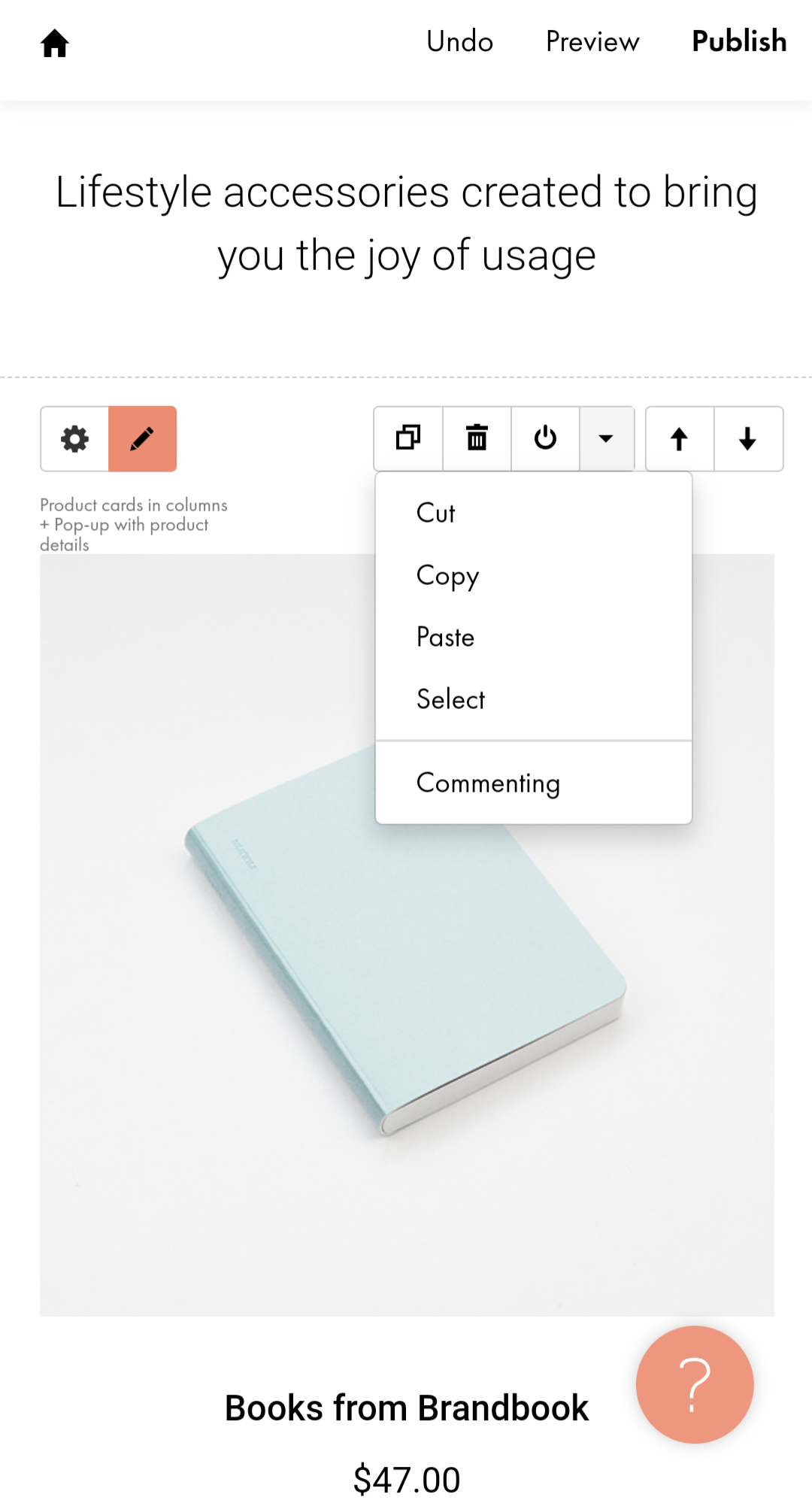
🏆
Winner: Tilda
. Both Showit and Tilda do not offer a dedicated mobile editor app. However, Tilda allows users to manage and edit their websites using the mobile browser version of the editor, giving it an edge over Showit. Showit, on the other hand, does not support editing via a mobile browser, which can be a limitation for users who prefer to make changes on the go. Therefore, Tilda is the better choice for users who require mobile editing capabilities.
Product testing options
Product Testing OptionsAssesses the options for trying out platform features before commitment.Score Components:
- Trial quality (40%): Extent and usefulness of the trial or free version.
- Feature accessibility (30%): How many features are available to test.
- Trial duration (20%): Length of the trial period.
- Ease of transition (10%): Smoothness of moving from trial to paid plans.
 8.3
8.3
 5.9
5.9
Overall Result
:
Showit wins
with a score of 8.3 against Tilda’s 5.9. Showit offers a 14-day free trial during which all premium features can be tested, and also provides a 30-day money back guarantee. Tilda, on the other hand, offers a free version with some testable features, but does not provide a trial version or a money back guarantee.

|

|
|
|---|---|---|
|
Free Plan |
No | Yes |
|
Trial Duration |
14 days | No |
|
Testing Premium Features |
All features during free trial |
Some features with the free plan |
|
Money Back Guarantee |
30-day money back guarantee |
No |
Price
PriceLooks at the cost-effectiveness and value for money of each platform.Score Components:
- Plan value (40%): What each pricing tier offers.
- Transparency and clarity (30%): Clearness of pricing structures.
- Flexibility of plans (20%): Range of options to suit different budgets.
- Hidden costs (10%): Additional expenses not included in the plan.
 7.9
7.9
 8.0
8.0
Showit and Tilda have similar pricing scores, with Tilda slightly ahead.
Showit offers a range of plans, including a custom plan for high-traffic blogs. Tilda, on the other hand, offers a free plan and two paid plans, but does not have an enterprise plan. Both platforms offer discounts on annual subscriptions.

|

|
|
|---|---|---|
|
Free |
No offering at this amount. |
Free ($0/month): Tilda’s Free plan allows for 1 website with up to 50 pages per website and 50 MB of space per project. It includes a free subdomain on tilda.ws, responsive design on all devices, basic animations, a built-in image and icon library, and Tilda CRM. |
|
$20-$19 |
Showit ($24/month): Ideal for sites without a blog. Includes 20GB storage and secure certificate. Regular design backups stored for 7 days. Value for price: 6.0 |
Business ($25/month): The Business plan expands capabilities to 5 websites per account, each with up to 500 pages and 1 GB of space, including source code export and API access. It builds upon the Personal plan features with additions suitable for more extensive business needs. Value for price: 9.0 |
|
$19-$30 |
Showit + Basic Starter Blog ($29/month): For new blogs. Includes everything in the Showit plan, plus blog-specific features. 20GB storage, up to 10k monthly visitors, daily backups stored for 30 days, pre-installed plugins (no additional plugins are permitted), 1 WordPress user. Value for price: 7.0 |
Personal ($15/month): The Personal plan offers 1 website with up to 500 pages and 1 GB of space. It includes all features of the Free plan plus the ability to connect a custom domain, advanced animations, full access to the Block Library, analytics, SEO tools, and online store capabilities. Value for price: 7.5 |
|
$30-$40 |
Showit + Advanced Blog ($39/month): For migrating or high-traffic blogs with custom plugin needs. Includes everything in the Basic Starter Blog plan, plus up to 25k monthly visits, unlimited number of plugins, unlimited number of WordPress users, Free advanced blog migration from WordPress or Squarespace and FTP access. Value for price: 8.0 |
No offering at this amount. |
|
$60-$70 |
Showit + Advanced Blog 50k ($69/month): Includes everything in the Showit + Advanced Blog plan, with possibility to install custom WordPress plugins, 30 GB storage, up to 50k visitors monthly, and possibility to migrate Squarespace and WordPress blog posts. Value for price: 8.5 |
No offering at this amount. |
|
$100+ |
Showit + Advanced Blog 100k ($129/month): Includes everything in the Showit + Advanced Blog plan, with possibility to install custom WordPress plugins, 50 GB storage, up to 100k visitors monthly, and possibility to migrate Squarespace and WordPress blog posts. Value for price: 9.0 |
No offering at this amount. |
location. As a result in rare cases the prices displayed here can differ from the ones you see on their
websites.
Hosting quality
Hosting
qualityExamines the reliability and performance of the hosting solutions.Score Components:
- Uptime (40%): Consistency and reliability of website availability.
- Speed (30%): Loading times and performance.
- Bandwidth and storage (20%): Sufficiency of resources provided.
- Data centers (10%): Quality and distribution of hosting infrastructure.
 7.3
7.3
 6.2
6.2
Winner: Showit
. Showit offers managed WordPress hosting with a 99.9% uptime guarantee and 20GB storage, making it a reliable choice for users who prioritize stability and storage capacity. Tilda, on the other hand, provides cloud hosting with up to 1GB storage capacity and a 99.9% uptime but without a guarantee. Although both builders do not disclose information about their data centers, Showit’s hosting quality score is higher, making it the winner in this category.

|

|
|
|---|---|---|
|
Do they offer hosting? |
Yes, Managed WordPress hosting with daily backups and 20GB storage |
Yes, cloud hosting with up to 1GB storage capacity |
|
Type of hosting: |
Managed WordPress hosting |
Cloud Hosting |
|
Uptime: |
99.9% |
99.9% |
|
Uptime Guarantee: |
Yes, 99% |
No |
|
Data Centers: |
Not disclosed |
Not disclosed |
Website Speed Optimization
Website Speed OptimizationEvaluates optimization of website loading timesScore Components:
- PageSpeed Score (30%): Google’s score indicating performance optimization.
- Loading Time (30%): The average time until a website is fully interactive.
- Mobile Optimization (15%): Optimization effectiveness for mobile devices.
- Resource Optimization (15%): Optimizing images, scripts, and other heavy resources.
- CDN Usage (10%): Use of CDN to enhance speed across geolocations.
 5.4
5.4
 4.9
4.9
🏆 Winner: Showit
Both Showit and Tilda have strategies for speed optimization, but neither provides specific information on their Core Web Vital improvements. However, Showit has a slightly higher website speed optimization score than Tilda.

|

|
|
|---|---|---|
|
Focus |
Optimization plugins, Caching |
Lazy Loading, Image Optimization |
|
Performance Tools |
Not specified |
Not specified |
|
Key Strategies |
Optimization plugins, Caching |
Lazy Loading, Image Optimization |
|
Load Times |
Varies depending on optimization and website complexity |
Varies depending on optimization and website complexity |
|
Page Speed Scores Range |
Not specified |
Not specified |
|
Core Web Vitals Improvement |
Not disclosed |
Not provided |
Showit, a drag-and-drop website builder designed primarily for creative professionals, uses optimization plugins and caching as its key strategies for speed optimization. However, the platform does not disclose any information on their Core Web Vital improvements. The load times and PageSpeed scores for Showit vary depending on optimization and website complexity.
Tilda, a web-based platform designed for creating websites, landing pages, and online stores, focuses on lazy loading and image optimization for speed optimization. Like Showit, Tilda does not provide any information on their Core Web Vital improvements. The load times and PageSpeed scores for Tilda also vary depending on optimization and website complexity.
Get a head start on website creation with AI
Create a custom website tailored to your business needs 10X faster with 10Web AI Website Builder!
Plugins and integrations
Plugins and integrationsMeasures the range and effectiveness of additional plugins and integrations.Score Components:
- Variety of options (40%): Range of available add-ons.
- Integration smoothness (30%): Ease of integrating plugins into the site.
- Quality of plugins (20%): Functionality and reliability of the options.
- Custom integration capabilities (10%): Support for custom or third-party integrations.
 5.8
5.8
 7.6
7.6
🏆 Winner: Tilda.
Tilda scores 7.6, offering a diverse range of integrations with external services to enhance the functionality of websites created on its platform. It supports popular processors such as Stripe, PayPal, and Verifone for payments, integrates with Google Analytics and Google Tag Manager for in-depth website analytics, and includes other integrations like Google Maps and social media platforms. Showit, with a score of 5.8, offers a variety of plugins primarily for users with the Advanced Blog plan, enhancing website functionality across SEO, spam protection, and more. However, the availability and use of these plugins are contingent upon the subscription tier.
Marketing Features
Design FunctionalitiesRepresents how well each platform allows for creative design and customization of websites.Score Components:
- Template Variety (30%): Range and quality of design templates.
- Customization (30%): Flexibility and options for design alterations.
- User Interface (20%): Ease and intuitiveness of the design process.
- Responsiveness (10%): Adaptability to different devices and screen sizes.
- Innovation (10%): Unique design features and tools.
 7.2
7.2
 6.9
6.9
🏆
Overall Winner: Showit
. Showit stands out for its extensive third-party integrations for email marketing and analytics. Tilda, while offering a wide range of features, lacks in the area of ads and promotions.

|

|
|
|---|---|---|
|
SEO Tools |
|
|
|
Email Marketing |
Yes, through third-party integrations |
Yes, through integration of third party services such as Mailchimp |
|
Blogging |
|
|
|
Social Media Integration |
|
|
|
Analytics and Reporting |
Yes, through integration of Google Analytics |
Yes, through integration of Google Analytics |
|
Ads and Promotions |
Yes, through third-party integrations |
No |
Customer Support
Customer supportEvaluates the quality and availability of support options.Score Components:
- Response time (40%): Speed of support responses.
- Support quality (30%): Effectiveness and helpfulness of the support.
- Availability (20%): Range of support channels (phone, chat, email).
- Resource richness (10%): Quality of self-help and educational materials.
 6.4
6.4
 5.5
5.5
🏆 Winner: Showit
. In the comparison of Showit vs Tilda, Showit takes the lead with a customer support score of 6.4. Showit offers email support from Monday to Friday, 7 AM to 11 PM Arizona Time, with a typical response time of 1-2 hours. For urgent issues, chat support is also available during business hours. This ensures that users can get timely assistance for their website-related queries.
Tilda, on the other hand, has a customer support score of 5.5 and primarily provides support via email without specifying the hours of availability. While Tilda’s Help Center offers comprehensive articles and tutorials for self-help, the lack of specified support hours and additional support channels may leave users waiting longer for responses to their issues.
Security
SecurityLooks at the platforms’ security measures and data protection.Score Components:
- Data protection (40%): Safeguards for user and customer data.
- SSL and encryption (30%): Implementation of secure connections.
- Compliance (20%): Adherence to industry security standards.
- Regular updates (10%): Frequency of security updates and patches.
 8.3
8.3
 7.6
7.6
🏆
Winner: Showit
. Showit’s security measures are comprehensive, with a focus on data privacy and protection. They adhere to GDPR guidelines, use Amazon’s S3 for secure data storage, and provide daily backups for blog data. Their websites come with free SSL certificates for secure connections, automated backups, and additional protections for WordPress-integrated sites.
Although it may not offer the same level of comprehensive security measures as Showit, Tilda also takes security seriously, with measures for GDPR compliance, DDoS prevention, and HTTPS encryption. They provide cloud storage and a Content Delivery Network (CDN) for fast loading times and DDoS attack protection. However, Showit’s security measures are more comprehensive, earning it the win in this category.
AI Capabilities
AI capabilitiesMeasures the effectiveness of AI-driven features and tools.Score Components:
- Automation efficiency (40%): Impact of AI on streamlining processes.
- Personalization (30%): AI-driven customization for users or customers.
- AI-Assisted design (20%): Role of AI in website design and functionality.
- Data analysis (10%): Use of AI in interpreting user data and analytics.
 0
0
 2.1
2.1

|

|
|
|---|---|---|
|
AI Builder |
|
|
|
AI Ecommerce features |
|
|
|
AI content generation |
|
Tilda offers AI-generated website content |
|
Additional AI features |
|
|
🏆 Winner: Tilda
. Tilda, with a score of 2.1, has a limited AI capability for generating website content, including headlines and text blocks. This feature is accessible through the Page Editor and requires a detailed description of the website for better text generation. The system emphasizes specificity and clarity in the prompts and is limited to 100 successful requests per day.
Showit, with a score of 0, does not have any AI capabilities.
User Management
User ManagementAssesses the platforms’ capabilities in managing user roles, permissions, and accessibility.Score Components:
- Role Customization (40%): Flexibility in creating and defining user roles and
permissions. - Ease of Management (30%): User interface and tools for managing users.
- Access Control (20%): Effectiveness of access control measures for different user
levels. - Scalability (10%): Ability to manage a growing number of users efficiently.
 6.7
6.7
 7.3
7.3
🏆 Winner: Tilda
. Managing your online team with Showit and Tilda involves different approaches to website editing access.
- Showit allows only one user on lower plans, on it’s Showit + Advanced Blog plan the platform allows unlimited number of users with different access levels.
- Tilda, the Collaborators feature allows adding teammates with either Full or Limited access. Full access enables collaborators to edit, publish, delete pages, view requests and statistics, and make changes to built-in website services. Limited access allows the project owner to specify what actions the collaborator can perform. This feature is available as a premium offering, and adding more collaborators requires additional payment, with costs adjusted based on previously paid periods. It applies to the entire account, not individual projects, and collaborators can be managed or replaced through the Site Settings.
Showit User Roles and Access Levels:
| Role | Description | Access Highlights |
|---|---|---|
| Administrator | Users with full access to all administration features, including Elementor settings. | Can edit all content, Access to Elementor settings, Can install plugins and themes, Can manage users |
| Editor | Users who can manage and publish content including pages and posts. | Can edit pages/posts created with Elementor, Cannot access Elementor settings, Can manage categories, tags, and links, Can moderate comments |
| Author | Users who can publish and manage their own posts. | Can create posts with Elementor, Cannot edit pages, Limited access to media library, Cannot access Elementor settings |
| Contributor | Users who can write and manage their own posts but cannot publish them. | Can create content with Elementor, Cannot publish or edit pages, No access to Elementor settings, Submissions require review by higher-level roles |
Additional Features

|

|
|
|---|---|---|
|
SSL Certificate |
|
|
|
Custom Domain |
|
|
|
Free Custom Domain Included |
|
|
|
International Domains |
|
|
|
Mobile Responsive |
|
|
|
Page Speed |
|
|
|
Website Builder Mobile App |
|
|
|
Convert a Website To An App |
|
|
|
Website Analytics |
|
|
|
Multilingual Sites |
|
|
|
Multiple Users |
|
|
User Feedback
Showit is a drag-and-drop website builder designed primarily for creative professionals such as photographers, designers, and bloggers. It offers users the ability to create custom, mobile-responsive websites without needing to write code. Showit’s unique dual canvas interface allows for the independent design of mobile and desktop views, providing a high degree of customization and control over the website’s appearance on different devices. The platform integrates seamlessly with WordPress for blogging, making it a popular choice for users who want the design flexibility of Showit for their site’s look and feel, with the powerful blogging capabilities of WordPress.
Tilda Publishing receives varied feedback from users, highlighting its strengths in offering a no-code, customizable website building experience with features like Zero Block for personalization and easy backend setup. Users appreciate its affordability, user-friendly interface, and responsive customer support. However, criticisms include buggy font customization, limited design elements, and instability in some of its features. Despite these drawbacks, many find Tilda beneficial for creating professional websites quickly and managing multiple sites under one plan, although some users advise caution due to issues with stability and customer support.
The making of this blog
We followed a clear, step-by-step process to write and research this article.
FAQ
Which platform is better for creative professionals, Showit or Tilda?
Can I integrate a blog with Showit and Tilda?
How do Showit and Tilda compare in terms of ecommerce capabilities?
Which platform offers better customer support, Showit or Tilda?
Are Showit and Tilda suitable for building websites without coding skills?
Which platform is better for SEO and marketing features?
How do Showit and Tilda handle website security?










